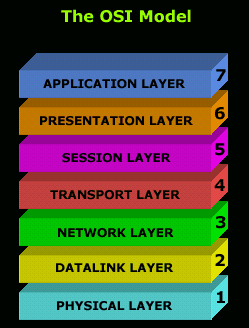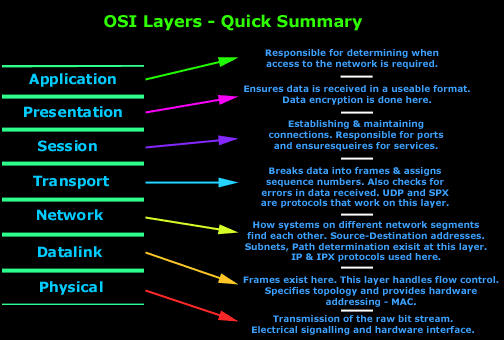| OSI is a standard description or "reference model" for how messages should be transmitted between any two points in a telecommunication network. Its purpose is to guide product implementors so that their products will consistently work with other products.
The Model

The OSI model was created by the IEEE committee so different vendors products would work with each other. You see the problem was that when HP decided to create a network product, it would be incompatible with similar products of a different vendor e.g IBM. So when purchasing 40 network cards for your company, you would need to make sure that the rest of the equipment would be from the same vendor, to ensure compatibility. It is quite clear that things were very restrictive, until the OSI model came into the picture. As most are aware of, the OSI model consists of 7 layers. Each layer has been designed to do a specific task. Starting from the top layer (7) we will see how the data which you type gets converted into segments, the segments into datagrams and the datagrams into packets, the packets into frames and then the frames are sent down the wire, usually twisted pair, to the receiving computer. Full in-depth analysis of each layer is available using the links to the articles at the bottom of this page. The diagram below is a quick summary of the OSI model: 
Sumber : Firewall.cx | 
0 comments:
Post a Comment